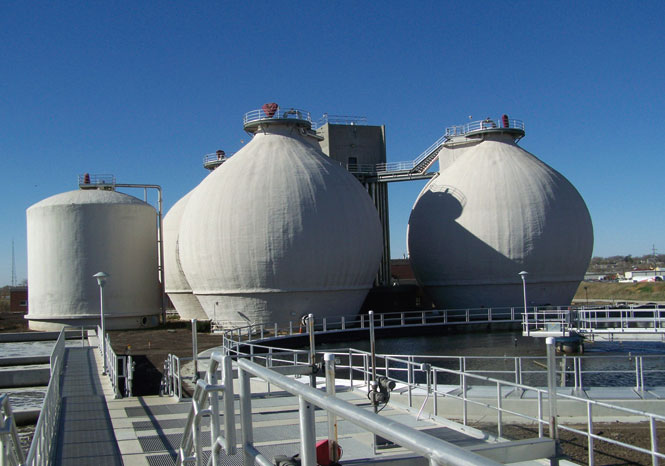

One U.K. grocery store plans to power itself using biogas harvested from its own unsold, rotting produce. Yum.
A Sainsbury’s store in Cannock in central England is getting access to anaerobic digesters. The store plans to use electricity solely from the digesters, taking no electricity from the U.K.’s national power grid, which is fed by a combination of coal, natural gas, nuclear power plants and other sources. Sainsbury’s will even sell any excess electricity it makes back to the grid.
The Cannock Sainsbury’s will be the first U.K. store to stop using U.K. grid electricity, the BBC reports. While we’ve never heard of a big U.S. store doing exactly that, U.S. grocery-store chain Kroger is supposed to have an anaerobic digester that provides more than 20 percent of the electricity needs of its Compton distribution center. And U.S. cities and states have recently planned anaerobic digester systems to take discarded food.
What happens in an anaerobic digester is ‘what happens inside a cow’s stomach after dinner.’
Here’s how the Sainsbury’s system will work. Food waste from many Sainsbury’s stores will get trucked to a central depot. (One store doesn’t make enough waste to power itself, so running the Cannock Sainsbury’s actually requires waste from several.) From the depot, a waste-management company called Biffa will truck the waste to its Cannock plant.
What happens at Biffa’s Cannock anaerobic digester is “what happens inside a cow’s stomach after dinner,” as this Ohio State University presentation puts it. The food goes into oxygen-free tanks with particular bacteria species inside that thrive without oxygen. Those bacteria break down the food in many steps; during the last step, bacteria produce primarily carbon dioxide and methane gas.
The Biffa plant separates the methane from the carbon dioxide, then uses the resulting biomethane just like natural gas mined from the ground to produce electricity. A 1.5-kilometer-long cable carries the electricity back to the Cannock Sainsbury’s store.
Anaerobic digestion does have some drawbacks. It produces some solid and liquid wastes called the digestate. Some of the digestate can be used as fertilizer, but then you have to make sure you have customers for fertilizers nearby (i.e., farmers). Anaerobic digestion is also considered a less favored way of dealing with excess food. From an environmental standpoint, it’s better to chop food up into deli salad, give it away to charities, or send it to animal feed. But if there’s some food you can’t avoid throwing away, anaerobic digestion is a great to take care of it.
P.S.P.S. (Popular Science Postscript): How can a process that produces carbon dioxide, a greenhouse gas, help reduce global warming? The explanation is a bit academic, but we love you for asking.
The carbon dioxide released from recently dead plants—whether you burn those plants, or stick ’em in a digester—isn’t always considered as contributing to global warming. That’s because in the natural cycle of things, the next generation of plants should take up the carbon dioxide released by the previous generation of dead plants, so long as there’s a new plant grown for every dead plant digested or burned. That’s the case for crops, which are plentifully regrown. On the other hand, fossil fuel-produced carbon dioxide is considered different because that CO2 would have stayed in the ground, had a human not dug it up and burned it.
